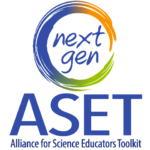
Rachelle Distefano

For over 25 years, Dr. DiStefano has focused exclusively on development, sustainability, and scaling of transformational K-20 educational initiatives aimed at improving equity and access to quality education opportunities for underserved students in Title 1 schools. As an Oakland teacher for 12 years, she founded the State of California’s first Law & Social Justice School to Career Partnership Academy for under-represented minority students severely at risk of educational underachievement. Supported by over $2 million in federal and state grants she developed, this school-within-a-school was based on a high school reform model (now referred to as “linked learning”) in which cohorts of students took classes together in 4 disciplines from 10th grade to 12th grade. She led the development and implementation of new curriculum that integrated legal principles and social justice themes across Language Arts, Social Studies, Science, and mathematics at three grade levels; enriched the learning by year-round service learning and summer internships; and created a collaborative interdisciplinary community of teachers through a process now referred to as “lesson study.” In addition to engaging her students in extra-curricular activitiesin local political issues and advocacy, she also founded the Oakland Youth Court, a 501(c)(3) non profit to provide ongoing service learning and leadership opportunities for her students. The second longest running peer court in the state in which students adjudicate first time offenders referred by police departments, the Oakland Youth Court is now a part of Oakland’s restorative justice program. This Oakland work received local, state and national recognition including the American Bar Association, the federal Office of Juvenile Justice Planning, and the Oakland Rotary, and served as a resource and model for developing other law academies and service learning programs in California and nationally. A report by the U.C. Berkeley/Oakland Metropolitan Forum commissioned by the State of California on Oakland’s career academies singled out DiStefano’s program for the highest rates of admission to U.C. Berkeley and other four-year colleges and the highest ratio of scholarship dollars per student, despite having the district’s lowest grade point averages when students entered the academy.
In 2007, DiStefano turned her focus to science education reform and led design and development of over $26,000,000 in STEM Education research and development grants since 2007, serving as a PI, Co-I, researcher and/or evaluator. These efforts include creating the vision for a comprehensive and innovative multi-pronged approach to transforming science education and, to support its implementation, she led the development of a successful $12 million National Science research grant proposal [Integrated Middle School Science Partnership (IMSS) NSF Proposal #0962804. The second largest research grant awarded to the 23-campus CSU system, IMSS was seminal for developing capacity for science education research at Cal State University East Bay. Over a six-year period, the grant supported in-depth science professional development aligned with the new Framework for K-12 Science Education to over 400 middle school science teachers in 10 districts across 4 counties in the SF Bay Area (a majority of whom served a predominance of low-income under-represented minority students and English Language Learners); supported the development of multi-level district science leadership teams and science teacher leaders; and served as a critical platform for developing faculty and county office science coordinators as science education -reform leaders who now inform science reform efforts across multiple systems in the state spear-headed by the California Department of Education and the Cal State University Chancellor’s Office. IMSS also engaged over 50 undergraduate students as researchers, most of whom were under-represented minorities and first-generation college students, many of whom presented at local and state research competitions. Finally, IMSS funds were combined with funds from other sources to develop and coordinate Hands-On Science Teaching Lab courses for undergraduate preservice candidates that provide multiple and well-supported opportunities for future teachers to teach inquiry-based science lessons to visiting classes of middle schoolers.
Specific to the area of pre-service education, DiStefano was an adjunct professor at California State University East Bay in the College of Education teaching English Language Development and Education Law. In 2007, she founded and directed California’s second largest paraprofessional-to-teacher certification pathway aimed at increasing teacher diversity and retention in low-performing schools in the region. In the context of this collaboration with 4 universities and 4 community colleges, she co-developed with a partner university an 18-month program for science majors that resulted in a science teacher credential and a masters in science education. She also served as director of early field experience for undergraduate math and science majors exploring teaching as a profession funded by the California State University Chancellor’s Office, and as Co-PI on a Noyce grant.
Her most recent pre-service endeavor, Next Gen ASET funded for $2 million by the National Science Foundation (Award No. DRL-1418440), supports a broad interdisciplinary team of researchers and practitioners representing universities across the country in the design and testing of tools for science methods faculty and pre-service teachers with beginning and emerging understanding of 3-dimensional science education as envisioned in the new science reform documents. This project was selected by the Carnegie Foundation for the Advancement of Teaching as one of its 7 inaugural demonstration sites nationwide for use of Improvement Science in science education reform. In addition, it was one of 6 projects nationwide featured in a video showcase produced for the National Science Teachers Association 2016 Conference in Nashville.
